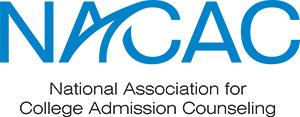Author’s note: This letter also appears at the opening of our updated Guide to Women's Colleges, which you can now find on our Resources page.
The landscape of women’s colleges continues to evolve against a backdrop of political shifts, social change, and economic pressures. Since the last edition of our guide, historic women’s institutions have faced transformative decisions, national policies around gender and education have swung dramatically, and debates over women’s and LGBTQ+ rights have intensified. Despite these challenges, women’s colleges have shown remarkable resilience and adaptability. In Collegewise's 2025 Edition of the Women's College Guide, we address how current events–from elections and legislation to campus-level changes–are reshaping women’s colleges, and how these colleges are responding with courage and innovation.
Table of Contents
- What is a Women's College?
- Full List of Women's Colleges in the United States
- 5 Benefits of Studying at a Women's College
- The Changing Landscape of Women's Colleges
- The State of Women's Rights in Higher Education
- Additional Resources
What is a Women's College?
In the next section, we'll discuss how women's colleges have changed in recent years, but before then, it's best to outline what women's colleges are and how they differ from other colleges in the United States.
Historically, women's colleges were defined as higher education institutions that gave space for female students to pursue a post-secondary education. Since then, and as we note throughout this blog and the guide itself, the landscape of women's colleges has changed tremendously. Some women's colleges have embraced gender inclusivity while others have introduced more rigid admissions policies.
If no two women's colleges are alike, what unites them today? One key characteristic tying women's colleges together is that nearly all of them are small liberal arts colleges (SLACs).
Full List of Women's Colleges in the United States
Today, approximately 30 women’s colleges remain in the U.S., down from 47 just over a decade ago. This decline mirrors broader trends in higher education, where small, private colleges—especially those with limited endowments—are under increasing strain.
Here's the full list of women's colleges today:
- Agnes Scott College (GA)
- Alverno College (WI)
- Barnard College (NY)
- Bay Path University (MA)
- Bennett College (NC)
- Brenau Women’s College (GA)
- Bryn Mawr College (PA)
- Cedar Crest College (PA)
- College of Saint Benedict (MN)
- College of Saint Mary (NE)
- Converse College for Women (SC)
- Cottey College (MO)
- Douglass Residential College (NJ)
- Hollins University (VA)
- Mary Baldwin College for Women (VA)
- Meredith College (NC)
- Moore College of Art & Design (PA)
- Mount Holyoke College (MA)
- Mount Mary University (WI)
- Mount Saint Mary’s University (CA)
- St. Catherine University, College for Women (MN)
- Saint Mary’s College (IN)
- Salem College (NC)
- Scripps College (CA)
- Simmons University (MA)
- Smith College (MA)
- Spelman College (GA)
- Stephens College (MO)
- Sweet Briar College (VA)
- Trinity Washington University (DC)
- Wellesley College (MA)
- Wesleyan College (GA)
5 Benefits of Studying at a Women's College
1. Smaller Class Sizes & Close-Knit Communities
If you benefit from more intimate academic settings or prefer a smaller campus size for your college experience, you may want to consider adding a women's college to your list. Close-knit communities allow students to foster meaningful experiences and relationships with faculty and classmates.
2. Unique Academic Specializations and Courses
As with most SLACs, they offer an array of courses and academic disciplines to students. Some colleges also offer cross-registration and dual-enrollment programs at nearby co-ed institutions or partner universities. For example, Barnard College allows students to take courses at Columbia University. Some women's colleges may offer unique courses not offered at other larger insitutitions. These courses include topics around feminism, intersectionality, racial justice, and LGBTQ+ rights.
3. Activism and Inclusivity
While inclusivity and diversity differ from college to college, some trends show women's colleges tend to enroll more students from marginalized groups than other liberal arts colleges. Many transgender and nonbinary students find solace in women's colleges.
Additionally, women's colleges have a longstanding history of activism (social and political). These colleges have often been regarded as hubs for activism. To understand the intensity of the activism culture on campus, be sure to research each college thoroughly.
4. Leadership & Initiative Opportunities
Behind every women's college is a history of trailblazing. Even today, many women's colleges maintain that forward-thinking spirit by offering a variety of leadership programs and initiative opportunities to students. Examples of these include Barnard College's NextGen Leadership Institute, a summer program for high schoolers with a passion for looking at the world through a feminist lens and Scripps College Laspa Center for Leadership's annual Student Leadership Institute (SLI). A program designed to encourage leadership development, curiosity, and action.
5. Real World Preparation
The legacy of women's college graduates and the paths that they've forged cannot be denied. Graduates of women's colleges are nearly twice as likely to complete graduate degrees compare to their liberal arts counterparts. Moreover, due to the collaborative learning, motivational culture, and leadership opportunities on campuses, it's no surprise that many alumnae of women's colleges have been pioneers in various domains, including:
- The first woman to receive the Nobel Peace Prize
- The first female CEO of a Fortune 500 company
- The first female to serve as a general in the U.S. Army
And of course, we can't discuss women's colleges without mentioning famous alumnae:
- Stacey Abrams, Politician (Spelman College)
- Julia Child, Chef (Smith College)
- Diane Sawyer, Television Reporter (Wellesley College)
- Meryl Streep, Actress (Vassar College, formerly a women's school)
The Changing Landscape of Women’s Colleges
Since 2021 (the last time this guide was updated), several historic women’s colleges have undergone major shifts. Mills College merged with Northeastern University, ending its status as an independent women’s institution. Notre Dame of Maryland University transitioned to coeducation, a decision driven by declining enrollment. Meanwhile, Sweet Briar College, which narrowly avoided closure in 2015, has seen a remarkable resurgence, reporting a 60% increase in enrollment over six years through strategic innovation and a reinforced commitment to women’s leadership.
These examples reflect the broader reality: women’s colleges are adapting in different ways to remain viable. Some institutions, facing financial and demographic challenges, have chosen coeducation or partnerships, while others are leaning into their unique identity to attract students.
Political and Policy Shifts
The past few years have been marked by shifting federal policies affecting gender and education. A recent executive order defining "sex" based strictly on biological characteristics has raised concerns about transgender inclusion, while federal scrutiny on diversity, equity, and inclusion (DEI) programs has put many college initiatives at risk. Despite these challenges, many women’s colleges have maintained their commitments to inclusive policies, ensuring that transgender women and non-binary students who align with their missions remain part of their communities.
At the same time, changes to Title IX—the federal law governing sex-based discrimination in education—have influenced campus policies. A 2024 expansion had broadened protections for LGBTQ+ students, but these were later rolled back, leaving institutions in a complex position. Women’s colleges, historically leaders in gender equity, now face decisions about how to uphold their values while navigating an uncertain legal landscape. Many remain steadfast in their mission of fostering safe, inclusive learning environments, even as external pressures mount.
The State of Women’s Rights and Higher Education
While women’s colleges have always been at the forefront of gender advocacy, recent years have tested their ability to sustain that leadership. Legislative shifts affecting reproductive rights, protections for survivors of sexual violence, and gender-based admissions policies have created new challenges. Yet, these institutions continue to provide spaces where students can develop leadership skills and advocate for gender justice.
Financial pressures are another significant factor. Across the higher education sector, declining enrollments and rising operational costs have forced many small colleges to close or merge. Since 2020, over 70 institutions have shut down or consolidated, with projections indicating further closures ahead. Women’s colleges, many of which are small liberal arts institutions, are particularly vulnerable. Yet, some have found success through innovative approaches—expanding career-focused programs, forming partnerships, and leveraging strong alumnae networks for financial support.
Transgender Inclusion and Diversity, Equity, and Inclusion Challenges
Women’s colleges have faced increasing scrutiny over their admissions policies concerning transgender and non-binary students. Today, most of these institutions explicitly welcome transgender women, while policies for non-binary and transmasculine students vary. A few schools have tightened their admissions criteria, sparking debate over the evolving definition of "women’s education." Meanwhile, attacks on DEI programs nationwide have left many colleges reevaluating how they support marginalized students without jeopardizing federal funding.
Despite these pressures, many women’s colleges continue to champion diversity and inclusion. Institutions in states with strong anti-discrimination laws, such as California and Massachusetts, have reaffirmed their support for LGBTQ+ students, while others have found creative ways to sustain DEI efforts under different names or through private funding. The resilience of these institutions demonstrates their enduring commitment to gender equity and social justice.
Economic Pressures and Institutional Resilience
The financial sustainability of women’s colleges remains a pressing issue. The so-called “enrollment cliff”—a predicted decline in college-age students—has exacerbated financial difficulties, forcing schools to rethink their models. Tuition-dependent institutions are particularly vulnerable, with some shifting to coeducation or adding graduate programs to broaden their student base.
At the same time, recent confirmations of the benefits of women’s leadership have helped some colleges maintain steady enrollment. Programs focused on women in STEM, business, and politics are drawing students who seek an education that addresses gender disparities in leadership. Some institutions, like Barnard College, have leveraged partnerships with larger universities to provide expanded opportunities while retaining their distinct missions.
Looking Ahead
The future of women’s colleges is one of adaptation and resilience. These institutions have weathered immense changes over the years, from coeducation movements to financial crises, and they continue to evolve. The debates over gender, education policy, and DEI initiatives will shape their next chapter, but their core mission—to empower students and foster leadership—remains unwavering.
This guide aims to help prospective students navigate this shifting landscape. Whether you’re seeking a historic liberal arts college, a progressive and inclusive space, or a career-focused institution, women’s colleges offer a range of opportunities. While challenges persist, the spirit of these institutions—bold, forward-thinking, and dedicated to gender equity—remains as strong as ever.
You can now download and read our updated Guide to Women's Colleges here. Happy reading!
Additional Resources
To learn more about the state of college admissions, shifting policies, or trends that may impact future applicants, browse the following resources:
- Read more about the Department of Education.
- Download our free guide to Understanding Early College Application Deadlines.
- Learn about affirmative action in our white paper, Race-Based Affirmative Action in College Admissions.
About Us: With more than twenty-five years of experience, Collegewise counselors and tutors are at the forefront of the ever-evolving admissions landscape. Our work has always centered on you: the student. And just like we’ve always done, we look for ways for you to be your best self - whether it’s in the classroom, in your applications or in the right-fit college environment. Our range of tools include counseling, test prep, academic tutoring, and essay management, all with the support of our proprietary platform, leading to a 4x higher than average admissions rates.



/Webinar%20blog%20CTA%20(1).png?width=562&height=187&name=Webinar%20blog%20CTA%20(1).png)


